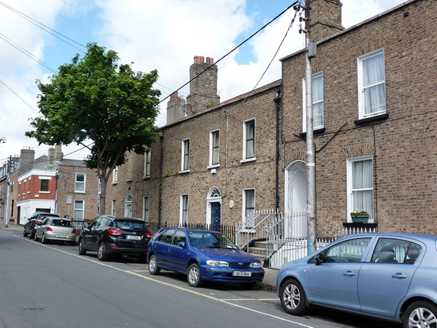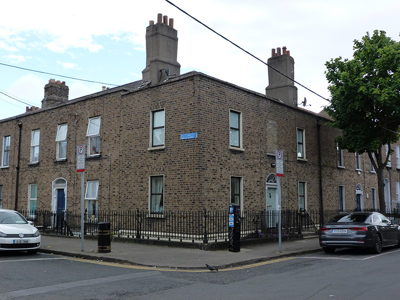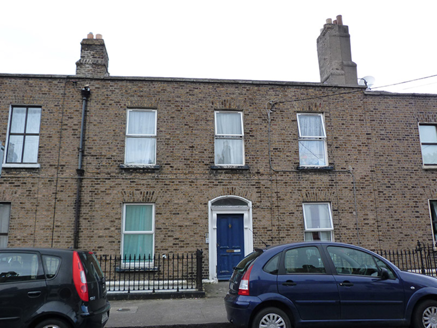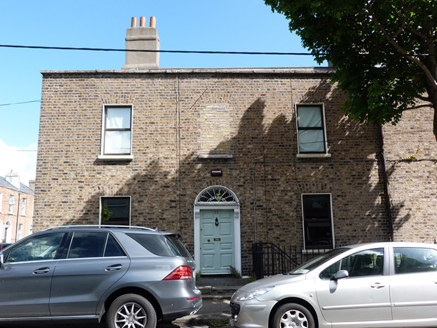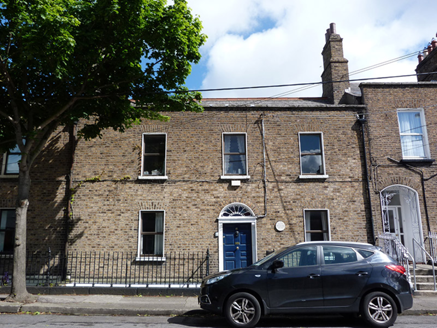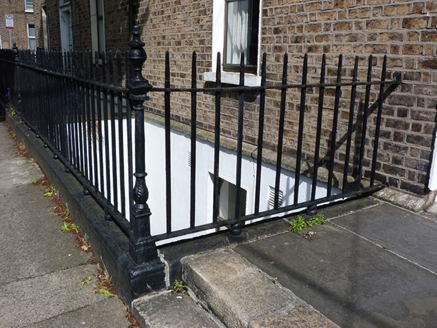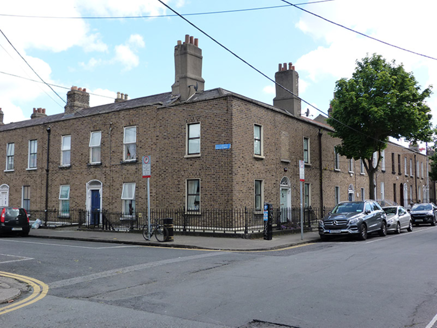Survey Data
Reg No
50110194
Rating
Regional
Categories of Special Interest
Architectural, Artistic, Historical
Original Use
House
In Use As
Apartment/flat (converted)
Date
1830 - 1850
Coordinates
315532, 232611
Date Recorded
09/06/2017
Date Updated
--/--/--
Description
Corner-sited terrace of three three-bay two-storey houses over basements, built c. 1840. Now partly in use as apartments. Pitched slate and artificial slate roofs, hidden behind brown brick parapets with cut granite coping. Brown brick and rendered chimneystacks having clay pots. Some cast-iron rainwater goods. Brown brick, laid in Flemish bond, to walls, with cut granite and masonry plinth course over rendered walls to basements. Slate hung walls to rear. Square-headed window openings having masonry sills, some raised rendered reveals. Replacement windows throughout. Segmental- and round-headed door openings, with moulded render surrounds and timber doorcases comprising panelled pilasters, scrolled console brackets and stepped cornices. Mixed plain and petal fanlights, timber panelled doors. Some square-headed door openings to basements. Granite steps having cast-iron bootscrapes to platforms. Wrought-iron railings with cast-iron corner posts, some cast-iron finials and decorative collars, set on cut granite and masonry plinth walls.
Appraisal
This group successfully addresses the junction of Lennox Street and Synge Street. It retains much of its historic form and fabric, enlivened by well-executed classically-influenced doorcases, including an unusual stained glass petal fanlight at No. 28 Lennox Street. The survival of slate hanging on the rear elevation is rare in the city and is particularly noteworthy. Front boundaries remain largely intact, maintaining a sense of enclosure and demonstrating skilled craftwork. The sculptor John Hughes lived at No. 28 Lennox Street, adding historical interest to the group. The buildings of Lennox Street and Synge Street are characteristic of residential design of the mid-nineteenth century, catering for the growing population of the Portobello area.
